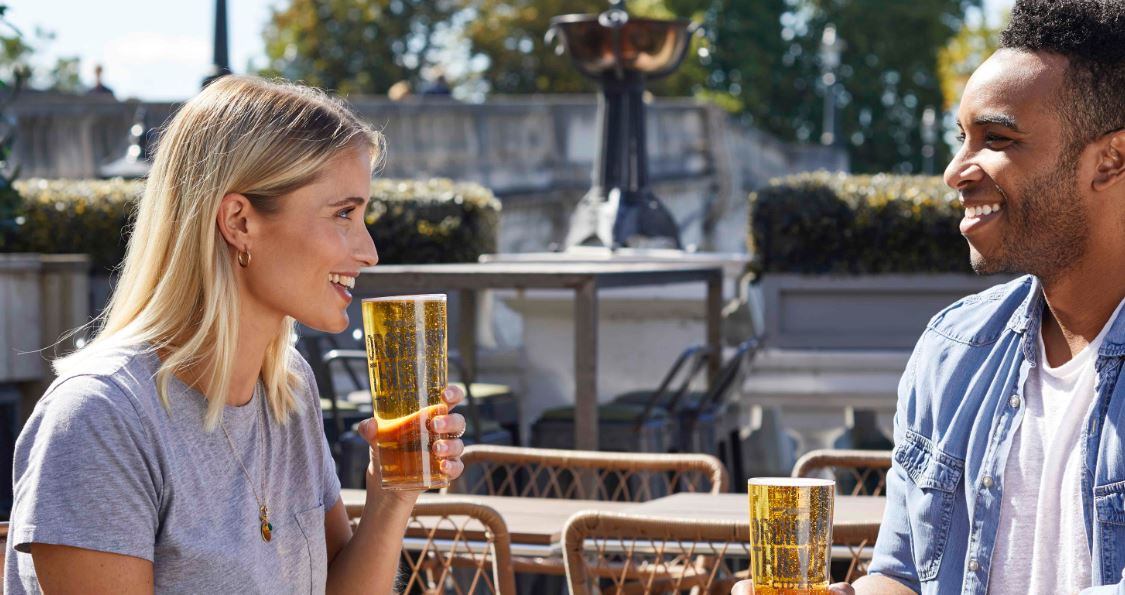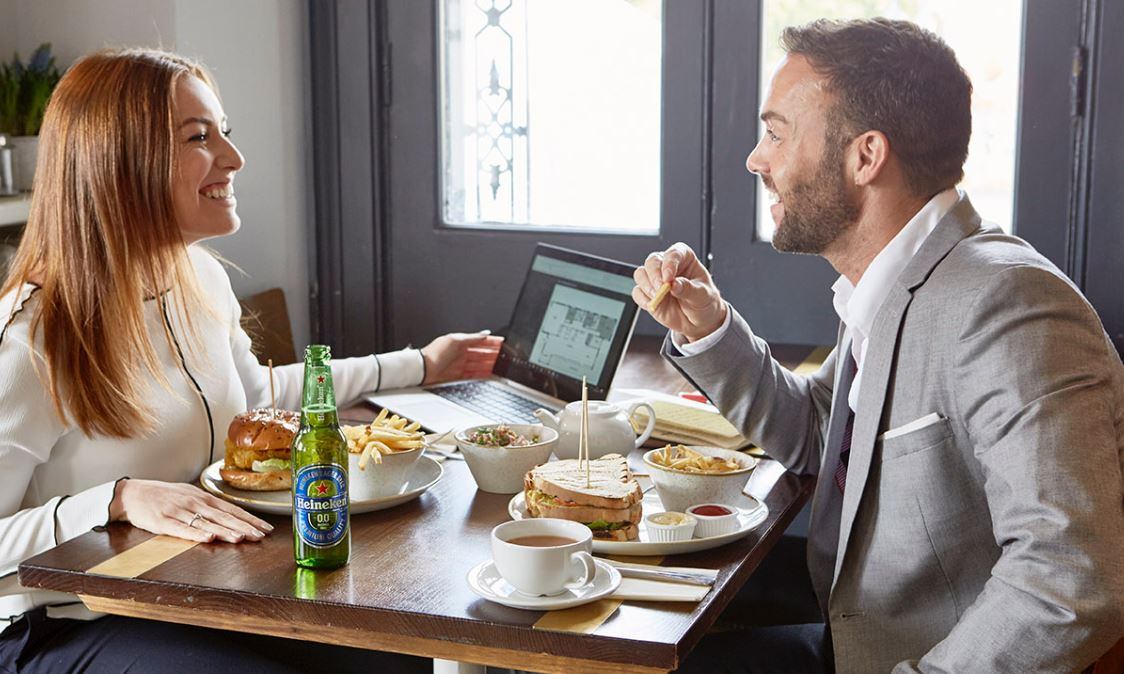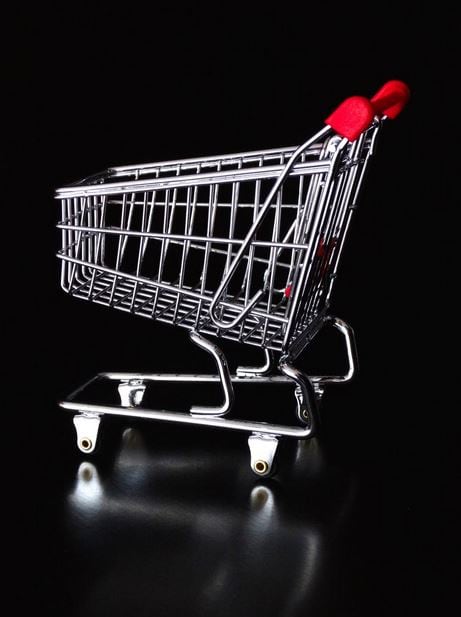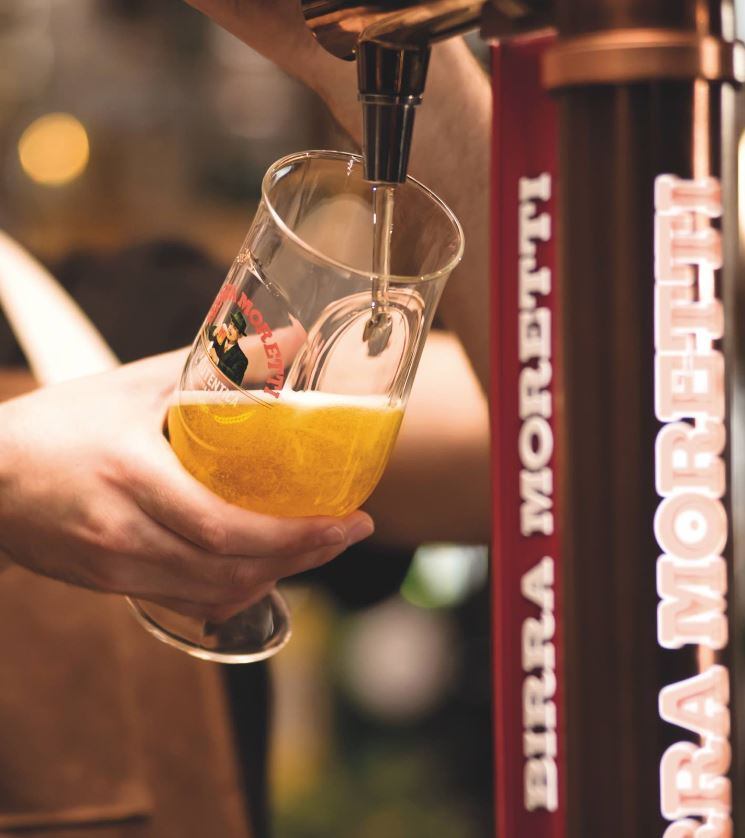What would a pub be without its beer? With lockdown lifting and pubs reopening, the question now is what to stock and how much?
The humble pint is the biggest part of the pub. It is the foundation of everything we do and the main thing Brits have missed over the coronavirus lockdown.
Importantly, it is also the biggest selling category in the trade. So, not being able to go to their local to sip the perfect pint of lager, ale, craft beer – the list goes on – is unnatural to many of us.
But now we’re reopening – or thinking about reopening pubs – preparation is essential as the trade gears up for a new normal. Every aspect of business needs attention, not just how customers and staff safely coexist inside the pub, but what they want on the bar.
For perspective, in the 12 months before Boris Johnson called last orders on 20 March, total wet revenue in the on-trade was £31bn – up £500m (1.7%) on the previous year.
Beer accounted for 41% – or £12.8bn – of this and grew by £194m.
Yet the biggest and brightest piece of news from these figures is that much of the beer volume for the period was delivered on draught, proving there is nothing better than a cool beer expertly pulled or poured from behind the bar.
As many operators will have expected, consumers have been trying to quench their thirst for beer and cider in the off-trade during lockdown, but it hasn’t resulted in the mammoth sales that some media outlets have reported.
Beer and cider off-trade sales increased by 45% according to Nielsen data for the 12-week period to 30 May. Some consumer beer and cider occasions have shifted to the off-trade, but overall the UK is drinking 30% less beer and cider – proof that the pub occasion can’t be replicated.
Cider sales

While beer sales have been on the rise, cider saw revenue decline by £22m (1.1%) to overall on-trade sales of £2bn.
Draught cider has echoed the trend we have seen in the fridge flavours, becoming more important.
Flavoured cider now accounts for 40% of all cider poured, up from just under 30% four years ago, CGA data for the 52 weeks ending 22 February 2020 shows.
Premium choices are key in the fridge, with 90% of packaged cider delivered by premium brands.
On draught, however, with throughput so vital to the on-trade, it is the well-known mainstream choices that are critical factors and still account for three in every four pints poured, the same CGA data suggests.
The mainstays and big brands will inevitably remain popular as punters seek security in their purchases and a trusted experience, however, cider expert Susanna Forbes believes there’s room to provide options too.
Some consumers during lockdown will have been experimenting with new products, she believes, providing operators with the opportunity to perhaps add a few local products to their range.
“As well as the wonderful thirst quenchers that we know and love, why not tap into something different as another option. Also, it might now be time for a cask cider either on tap, or in the fridge maybe more appropriate.”
She adds that “pubs are a brilliant place for people to find out more about cider”, and it is an opportune time now to educate customers on cider.
Susanna Forbes is the co-founder of Little Pomona, author of The Cider Insider and editor of Full Juice magazine
A huge part of the irreplicable pub visit is also the quality of a product that an excellent operator pours into a glass. Cans and bottles sold in the off-trade are, mostly, to a high standard, but the standalone skill and craft of a pub pour uniquely delivers the quality of a product to the customer’s lips.
It is this aspect that hospitality communications consultant and beer judge Kate Hempsall believes operators should tap into.
“Initially and always, operators need to focus on quality and make sure that everything they serve is to the best quality,” she says.

“Presentations, too, is going to be important as there will be an element of diminishing personal contact that you usually get in a pub. There will also be limited dialogue between staff and customers, so pubs must make sure beer is presented as best as possible – so customers know what’s on offer – because you’re going to have to fill that gap of personal interaction.”
Hempsall speaks with the expectation that customers will come back to the pub, a stance Heineken’s on-trade category controller also shares, although forecasts for the rest of 2020 do appear challenging.
Consumer confidence in the sector is likely to take time to recover, explains Heineken UK on-trade category controller Andy Wingate, but he believes that younger consumers will be the ones to return to some form of normal behaviour sooner.
“Overall, our expectations for the category are that volumes in 2020 will only be around 41% of 2019 levels,” he says. “However, from talking to consumers, the majority of people are missing the pub and looking forward to its return.”
Some 22% of consumers responding to an Attest weekly poll in May claimed they would be comfortable returning to the pub as soon as restrictions were lifted, while an additional 55% said they would do so as long as precautions were in place.
And with pubs introducing safety measures to reduce and limit the risk of coronavirus spreading in their businesses, combined with Brits wanting to get back into the pub, Wingate strongly believes that, although perhaps not immediately, some form of normality will resume.
“There is absolutely no question that pubs will bounce back,” he says. “It will be challenging, but the great British pub holds a special place in the hearts of communities and of the UK public. During lockdown we have seen licensees pivot their businesses to provide vital services such as a local shop, takeaway and delivery, and supporting the NHS or vulnerable groups.
“Pubs are hugely important to people’s lives and consumer positivity is returning.”

But what do we need to do as a trade to tempt customers back to the pub when, along with previous obstacles, there’s the added perception of a health risk in public places?
Award-winning beer writer and founder of Fermentation Emma Inch recognises these facts, saying: “Publicans, pub operators and pub staff have been working hard for a long time (even pre-Covid-19) on making a visit to the pub an 'occasion' that can rival a 'Netflix and takeaway' night in.”
“Although some people will probably be desperate to get back to the pub, others will need more encouragement out of their homes.”
Inch continues: “Partly that will be about wanting to feel safe, and partly it will be a result of reduced disposable income. But another element will be about wanting an experience to rival what they can get at home, so pubs will need to double down on those efforts to create something special.”
Beer and cider shopping trends during lockdown
According to Heineken UK data, in the off-trade, the beer and cider category has seen a 45% increase in sales versus a normal 12-week period. As the volume split between on and off trade is 52:48 in favour of off-trade, the UK is drinking approx. 30% less beer and cider overall. Consumers have switched some occasions to the off trade, but others just cannot be replaced.

Generally, consumers have bucked the long-term trends of shopping with smaller baskets more often, reverting back to the weekly or fortnightly big shop routine. It means bigger packs being bought in big stores. The big box retailers like Tesco, Sainsbury, Asda and Discounters are outperforming, while more convenience-focused retailers are missing out.
Post lockdown there is a strong chance that the regimented weekly or fortnightly big shopping trip will disappear again, and old habits will return.
Just as the added ease of popping to the local convenience shop may prove appealing, you can equally imagine returning to old habits in the on trade as well.
Although the first few months following reopening will be hard, we hope operators can feel reassured that consumer buying habits will likely return to their pre-lockdown norms.
The renowned beer expert also points out one of the sector’s biggest weapons in gaining consumer interest – the fact pubs can offer something supermarkets can’t when it comes to choice as well as serve.
“People will be wanting to see things they just can't get from the supermarket or delivered online,” she says.
“New releases, limited editions, drinks that require unusual ingredients or a bartender's skill to put together, will all be popular. Also, many people are much more aware of their physical and mental health than they were a few months ago and that – together with the fact that more people may be driving in order to avoid public transport – means that interesting, quality alcohol free options will be vital.”
Frances Brace, who campaigned to save the community-owned Duke of Marlborough – which she is now a co-owner of – in Lower Sommersham, Ipswich, also believes consumers will be coming back to pubs for things they can’t get from the supermarket, which includes, first and foremost, a great pint of draught keg or cask beer.

Getting that pint right will add to the overall experience, as Brace adds: “It’s important for local pubs to order something worth coming out for, they’ve got to have a brilliant offer. If ever there is a chance to shine it’s now and you have to show that you’re selling a fantastic product as well as an atmosphere and a gathering of people that’s been looked forward to for a long time.”
Heineken’s Wingate’s thoughts are along the same lines, pointing out that customers will be wanting to meet family and friends for a pint, delivered by high-quality service. And service is the prime factor here and will be more important than ever, considering many consumers have been able to pay £1 for a can or bottle of beer from the supermarkets during lockdown, “so to justify them now paying £3.65 the service needs to be top notch,” he adds.
But pre-coronavirus behaviours are expected to return, perhaps not in the immediate future, although certainly in the future, Wingate hastens to add, saying: “We believe that behaviours will revert to normal and the role of beer and cider will remain unchanged.”
Occasions will be the biggest driver of consumers returning to normality, he adds, saying that although bigger ones will be rarer, reasons for visiting the pubs – to celebrate with family and friends – will largely remain the same.
“Draught accounts for 90% of on-trade sales volumes according to CGA data for February 2020, so it remains a vitally important part of your offering. Packaged may play a slightly more important role initially – especially among older drinkers – due to perceptions of safety, but following the best practice glass care and pouring techniques will not only deliver great quality pints but also help to reassure customers.”
But what will they be buying? One of the biggest challenges to outlets reopening will be managing their draught offering. It isn’t known what footfall will be like on the first few days of opening, which needs to be considered. For instance, the average pub has nine keg lines, plus some cask ale lines, but not reaching the right throughput is going to damage beer quality and therefore customer experience.
So the advice from Heineken is:
- The first tap an outlet should put on is lager, likely a sessionable 4% lager, as these generally appeal to the widest group of consumers.
- Second, outlets should look to add an apple cider to their range. While premium strength lager in many cases will be a bigger seller, those consumers are more likely to switch into a session lager than a cider drinker would. You want to offer a range which makes as many people happy as possible.
- Following that: a stout; a keg ale; then premium strength lager, and flavoured cider should all be added to the line-up before outlets should think about having multiple options in one category.
- Basically, a John Smith’s consumer is going to be more upset at being asked to drink Amstel than a Birra Moretti drinker would, so try to ensure you tick off the main categories as quickly as possible as you expand the range.
- This challenge will be most keenly felt in cask ale. With only a three-day shelf life, outlets need to ensure that volumes are there if they are to avoid offering poor quality, bad yields and wasting beer.
- Our suggestion would be to think about days of the week – maybe have only one or possibly two casks lines on during the week, then add extras on a Friday to offer more choice over the busier weekend trading period. Amber ales are the best sellers and most accessible choices accounting for 67% cask volume sales and with a higher rate of sale than both Gold and Dark. Offer a well-known Amber as your initial choice and then look to fill out the range as footfall and volumes become more stable.
One thing everyone agrees on is to be clever with the range curated – be it large or small.
Consider how consumers have flocked to support local businesses during lockdown, now might be the perfect time to use one of your cask lines to celebrate a local ale.
“Cask ale is one of the few drinks that can't be replicated at home and is something that many regular pub goers have missed over the past few months,” says Inch.
“A pint of cask is definitely top of my list of drinks when I return to the pub! Over the long weeks of lockdown many people have come to appreciate their local businesses even more than ever, and they will remember those breweries who've gone the extra mile to engage with and look after their communities. Stocking an ale that's locally-produced, perhaps with a great story behind it, is going to fit in with the public's wish to support small businesses local to their homes.”
So, although there isn’t one definitive answer for all pubs, the advice for beer stocking and ranging is clear – don’t go overboard, be selective and respond to consumer demand.
ADVERTISEMENT – Support from Heineken
- The Pub Collective – support and advice for reopening
- Brought together in one place all the information, support, tools and advice for customers during lockdown and as they reopen and rebuild their business. Now featuring a complete reopening section, including risk assessments and reopening pub guidelines utilising insight from Heineken’s pub estate.
- Swifty – helping pubs reopen safely and drive loyalty
- A new payment and loyalty app designed to help operators navigate contact-free reopening and adapt to post-lockdown guidelines. The app offers order and pay at table to reduce unnecessary human contact, reservation management to manage social distancing and capacity in outlet and finally promotions and loyalty campaigns to help encourage repeat business and drive footfall.
- Hello Beer – Helping pubs deliver a great consumer experience
- A new mobile training app designed to upskill bartenders on beer and cider service quality, from cellar to glass care, to the perfect serve. Helping
- operators deliver a great experience, improve hygiene and reduce waste which in turn reduces cost. Hello BEER can help operators tap into up to £25k additional profit as well as retain happy, loyal customers.
- Heineken Buying Club – Helping pubs save money
- Providing operators with savings on a variety of essential and added-value services from leading suppliers. Utilising the buying power of both HEINEKEN and Star Pubs & Bars, customers will receive our best negotiated deals with better commercial terms than typically found elsewhere. We estimate an average saving of £5,000 per year through the Heineken Buying Club, saving our customers both time and money to focus on other areas of their business.
- POS-Direct – Helping pubs signpost hygiene & safety measures and communicate offers and events to drive footfall
- Offers a suite of physical and digital point of sale items which customers can order free of charge to support them with social distancing guidelines and reopening regulations. POS-Direct also offers support around rhythm of the week opportunities, taking knowledge from Star Pubs & Bars’ operations, to help operators communicate their offering and drive footfall, loyalty or increase spend during quieter periods or as restrictions are lifted. Within the first 4 days alone we received over 1,300 orders, the equivalent of £340k spend.
